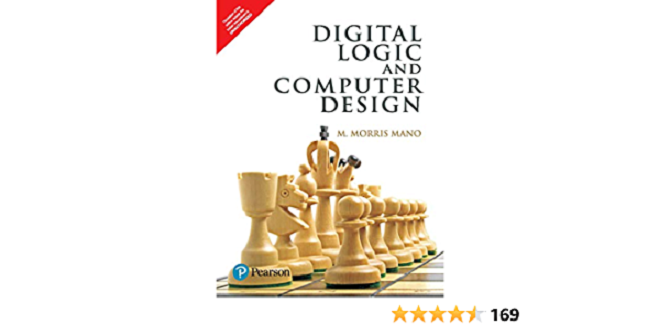digital design digital design digital design principles & practices

Analog versus Digita
Analog devices and systems process time-varying signals that can take on any value across a continuous range of voltage, current, or other metric. So do digital circuits and systems; the difference is that we can pretend that they don’t! A digital signal is modeled as taking on, at any time, only one of two discrete values, which we call 0 and .
Digital computers have been around since the 1940s, and have been in widespread commercial use since the 1960s. Yet only in the past 10 to 20 years has the “digital revolution” spread to many other aspects of life. Examples of once-analog systems that have now gone digital include the following. Still pictures. The majority of cameras still use silver-halide film to record images. However, the increasing density of digital memory chips has allowed the development of digital cameras which record a picture as a Wakerly Copying Prohibited 640×480 or larger array of pixels,
where each pixel stores the intensities of its red, green and blue color components as 8 bits each. This large amount of data, over seven million bits in this example, may be processed and compressed into a format called JPEG with as little as 5% of the original storage size, depending on the amount of picture detail. So, digital cameras
Digital Devices
The most basic digital devices are called gates and no, they were not named after the founder of a large software company. Gates originally got their name from their function of allowing or retarding (“gating”) the flow of digital information. In general, a gate has one or more inputs and produces an output that is a function of the current input value(s).
While the inputs and outputs may be analog conditions such as voltage, current, even hydraulic pressure, they are modeled as taking on just two discrete values, 0 and 1. Figure 1-1 shows symbols for the three most important kinds of gates. A 2-input AND gate, shown in (a), produces a 1 output if both of its inputs are 1 otherwise it produces a 0 output. The figure shows the same gate four times, with the four possible combinations of inputs that may be applied to it and the result
Electronic Aspects of Digital Design
Digital circuits are not exactly a binary version of alphabet soup—with all due respect to Figure 1-1, they don’t have little 0s and 1s floating around in them. As we’ll see in Chapter 3, digital circuits deal with analog voltages and currents, and are built with analog components. The “digital abstraction” allows analog behavior to be ignored in most cases, so circuits can be modeled as if they really did process 0s and 1s.
John F. Wakerly Copying Prohibited One important aspect of the digital abstraction is to associate a range of analog values with each logic value (0 or 1). As shown in Figure 1-2, a typical gate is not guaranteed to have a precise voltage level for a logic 0 output. Rather, it may produce a voltage somewhere in a range that is a subset of the range guaranteed to be recognized as a 0 by other gate inputs. The difference between the range boundaries is called noise margin—in a real circuit, a gate’s output can be corrupted by this much noise and still be correctly interpreted at the inputs of


